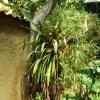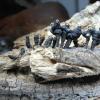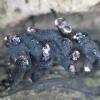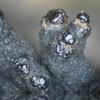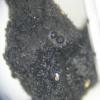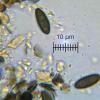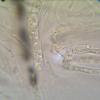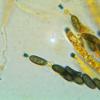
08-06-2013 08:04
 Maren Kamke
Maren Kamke
Hello again,I found this one on wood (Angiospermae

02-06-2013 13:13
Carmen EchavarriHello, this is the first time I participate in the

02-06-2013 15:22
 Jakob Schneller
Jakob Schneller
Recently I have found this pyrenomycetous fungus

02-06-2013 13:36
 Edouard Evangelisti
Edouard Evangelisti
Bonjour à tous, Je sollicite votre aide précieu

03-06-2013 19:10
Esquivel-Rios EduardoHola Todos.Saludos.Este especimen fue encontrado s
Unknown Xylaria from the Tropical House
Maren Kamke,
08-06-2013 08:04
 Hello again,
Hello again,I found this one on wood (Angiospermae) in the Tropical House of the Hagenbeck Zoo in Hamburg.
Coralloid appearence, 3 cm wide and 1,5 cm high, black with resinous exudates at the top of the branches.
Spores ovoid, dark brown with a germ slit (11-13)11,7x4,25(4-5) µm, Asci 110x6, IKI positive, blue porus 4x2µm.
I think it is a Xylaria sp.
Thanks for your help.
Regards Maren

